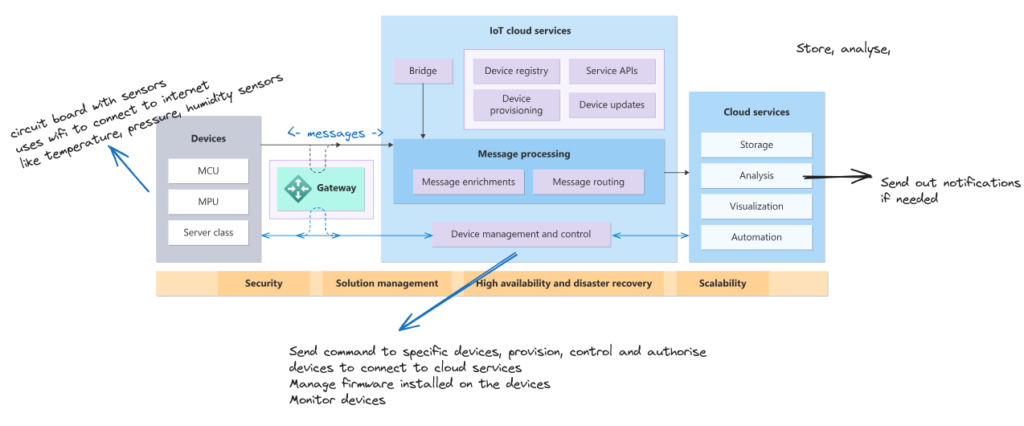The interplay between AI, cloud, and edge is a rapidly evolving domain. Earlier, the edge was supposed to capture just data and send it back to the datastore where it was used for analysis and retrieval later. Now, through machine learning and deep learning, models can be trained on the cloud and pushed to the edges. Containers are central to this approach. When deployed to edge devices, containers can encapsulate deployment environments for a range of diverse hardware. CICD (Continuous integration – continuous deployment) is a logical extension to deploying containers on edge devices.
Ultimately, AI, cloud, and edge technologies deployed as containers in CICD mode can transform whole industries by creating an industry-specific, self-learning ecosystem spanning the entire value chain.
A typical IoT architecture

Device Characteristics
- Embedded systems with usually no human intervention
- Deployed in remote locations or human-inaccessible locations
- Communicate with the backend systems
- Limited power and processing capability
- Intermittent, slow, and/or expensive network connectivity
- Use different protocols – Industry-specific, custom, or proprietary
Communication
The IoT Device SDKs and IoT Hub support common communication protocols such as HTTP, MQTT, and AMQP for device-to-cloud and cloud-to-device communication. In some scenarios, you may need a gateway to connect your IoT devices to your cloud services.
The device might send periodic or event data to the cloud services. For example, a device might report the temperature of the equipment every minute OR it could send out a message only when it increases beyond 100 degrees. That is the difference between periodic and event-based.
IoT Solution
Any IoT solution must address the following solution-wide concerns:
- Security includes physical security, authentication, authorization, and encryption.
- Solution management including deployment and monitoring.
- High availability and disaster recovery for all the components in your solution.
- Scalability for all the services in your solution.
In the next blog, we will break down each of these sections
Pingback: Edge Devices & Gateways - klyff.com